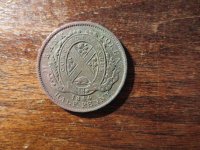undertaker
Hero Member
- May 26, 2006
- 562
- 336
- Detector(s) used
- Garrett Ace 250 and Whites Bullseye II Pinpointer
My brother and I have ace 250s which we picked up new for around $200.00 each. We have found alot of clad coins, tokens and some silver also musketballs, buttons and tons of junk. My brother is talking about upgrading to a whites so he can get more depth. We have hit some very old sites where we have been skunked and we walk away with the feeling what have we missed? Are the coins there and are detectors arn't reaching them. Will a $800.00 whites detect deeper that a $200.00 ace? I know they will discriminate better.
Upvote
0









